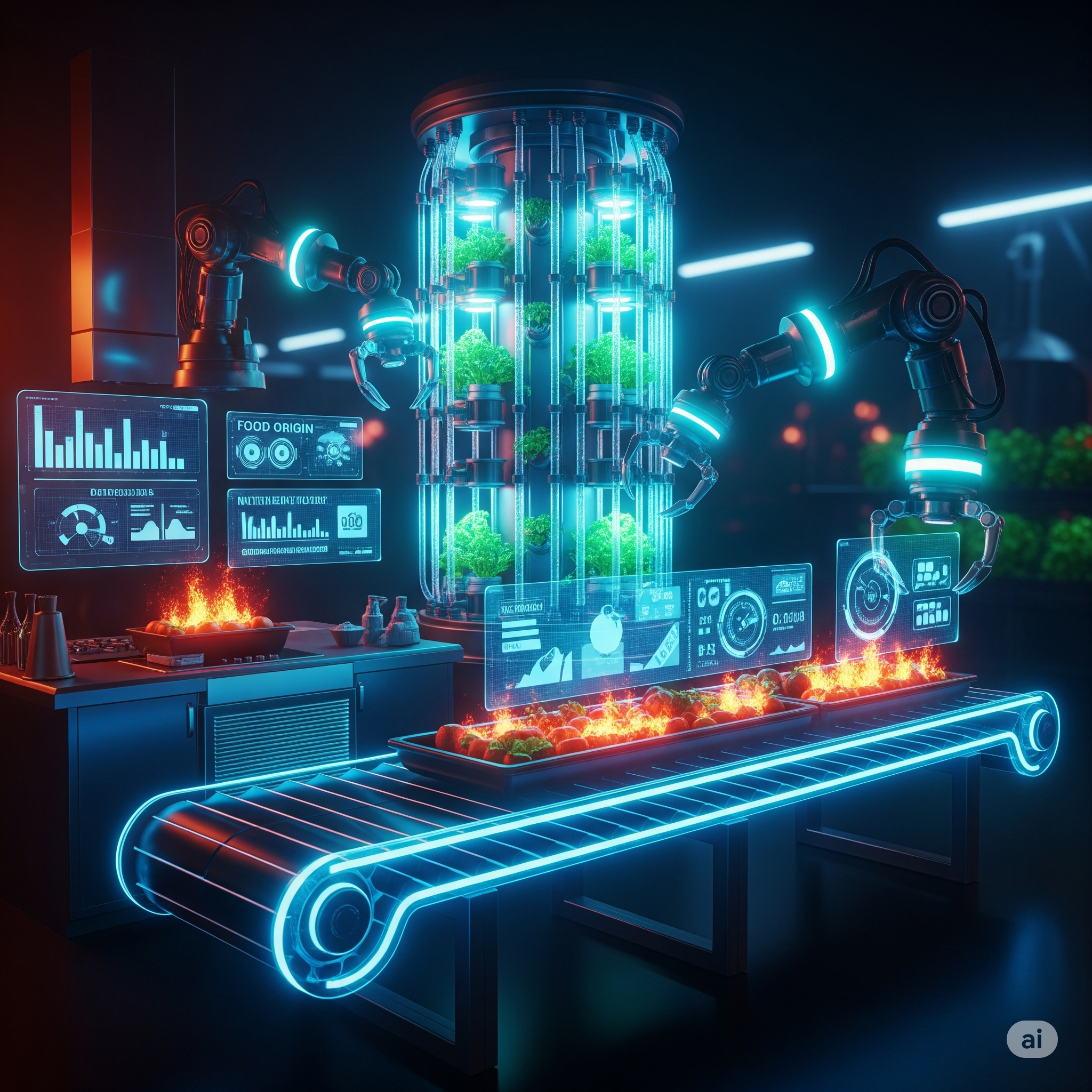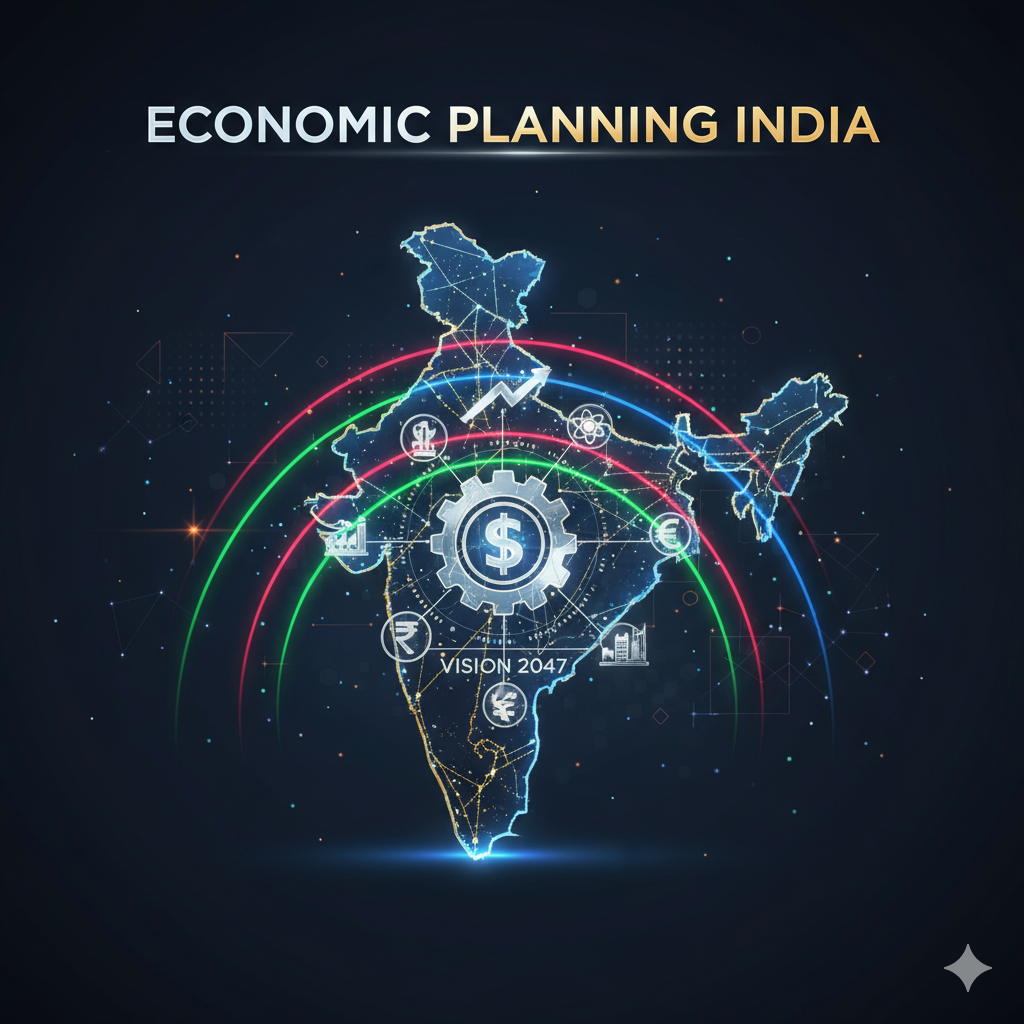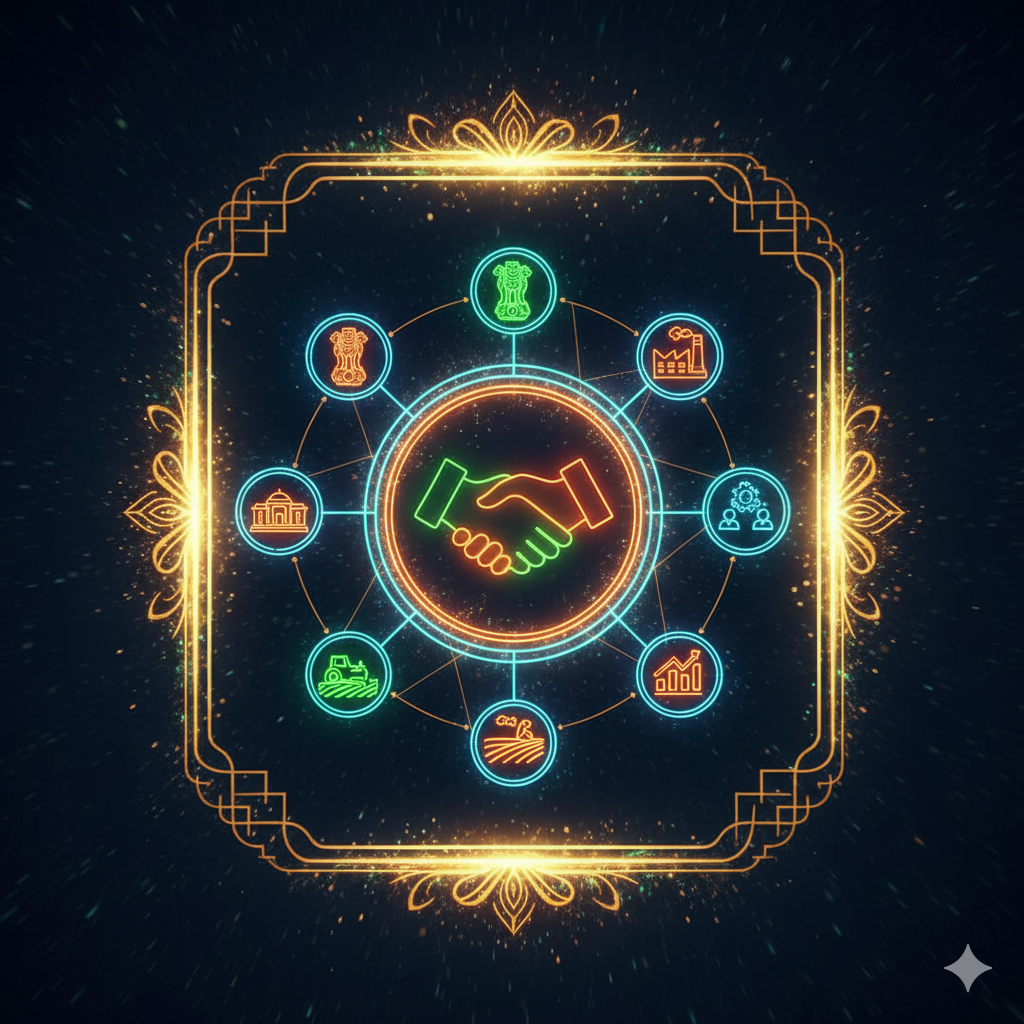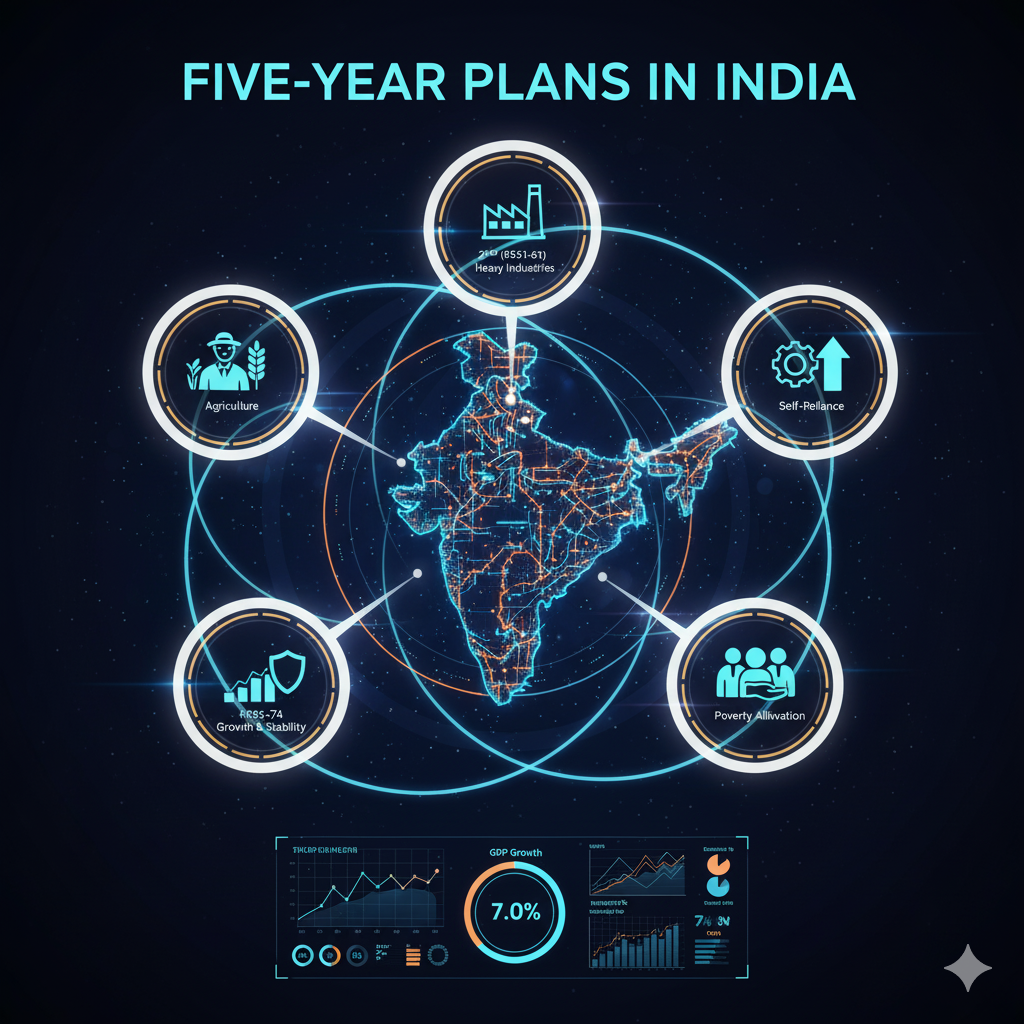Introduction
In recent years, a powerful shift has been transforming the agricultural supply chain — the Farm-to-Fork model, driven by technology. This approach enables farmers to sell their produce directly to consumers, bypassing traditional middlemen and market inefficiencies. What used to be a multi-layered and often opaque process is now becoming transparent, efficient, and empowering — for both farmers and consumers.
India, where over 58% of the population depends on agriculture, is witnessing the rise of digital platforms, mobile apps, cold chain logistics, AI, and blockchain that are helping bridge the gap between the field and the table. In this article, we explore the Farm-to-Fork revolution, the role of technology, the benefits and challenges, and the future outlook of this transformative shift.
What is the Farm-to-Fork Model?
The Farm-to-Fork (F2F) model refers to the direct supply chain between farmers and end consumers. The goal is to minimize the intermediaries and reduce the time taken for fresh produce to reach consumers. Traditionally, a farmer’s produce travels through middlemen, wholesale markets, commission agents, and retailers before reaching the consumer. Each stage adds cost, delay, and sometimes even spoilage.
In a Farm-to-Fork model, this chain is reduced — often to just one or two steps, enabled by digital tools and logistics support.
Why Is Farm-to-Fork Important in Agriculture?
- Empowers Farmers: They retain a larger share of the final price.
- Reduces Food Waste: With streamlined logistics, perishable items reach markets faster.
- Boosts Transparency: Consumers know where their food is coming from.
- Improves Nutrition: Fresher food means higher nutritional value.
- Strengthens Local Economies: Promotes local produce and builds regional agri-economies.
Technology Driving Farm-to-Fork
Several digital and technological tools are making the Farm-to-Fork model scalable and efficient. These include:
1. Mobile Applications and Marketplaces
Apps and platforms now allow farmers to:
- List their produce online
- Track orders and payments
- Connect with local buyers or directly with households
Examples include:
- Ninjacart – India’s largest fresh produce supply chain platform
- DeHaat – Provides a full-stack agri solution from inputs to market access
- BigHaat – Connects farmers with buyers, and offers agri-inputs online
2. E-Commerce Integration
Fruits, vegetables, dairy, grains, and even organic produce are now sold via:
- Amazon Fresh
- Flipkart Supermart
- Blinkit (Grofers)
- Country Delight
- Farmizen
These platforms often source directly from farms, using traceability to assure consumers of quality and origin.
3. IoT (Internet of Things) and Sensors
IoT devices help monitor:
- Crop health
- Storage conditions
- Transport environments (temperature, humidity)
This data ensures that perishables are handled optimally from field to fork.
4. Blockchain Technology
Used for:
- Traceability: Knowing where food comes from
- Food safety compliance: Ensuring it hasn’t been tampered with
- Smart contracts: Automating payments once delivery is verified
Example: IBM’s Food Trust blockchain platform has been used by Walmart for supply chain transparency.
5. Cold Chain and Logistics Tech
Modern cold storage units, refrigerated trucks, and real-time route tracking ensure that perishable goods move quickly and safely to consumers.
Startups like Tessol and LEAF (Lawrencedale Agro Processing India) are innovating in cold chain logistics.
6. Artificial Intelligence and Data Analytics
AI helps:
- Predict demand and supply trends
- Match consumer preferences
- Set dynamic pricing
- Optimize delivery routes
- Provide personalized crop advisories to farmers
Benefits of Farm-to-Fork Enabled by Technology
✅ For Farmers:
- Higher Earnings: Eliminating middlemen increases profit margins.
- Market Access: Farmers can sell to cities, hotels, or even export markets directly.
- Control Over Pricing: Dynamic pricing based on quality and demand.
- Inventory Planning: Predict which crops to grow and when to harvest based on demand.
✅ For Consumers:
- Fresh, Chemical-Free Produce: Reaches homes faster, reducing the need for heavy preservatives.
- Traceability and Trust: Consumers know who grew their food and where.
- Better Prices: Reduced middlemen costs translate to lower consumer prices.
- Support for Local Farmers: Encourages ethical consumption.
✅ For the Environment:
- Reduced Carbon Footprint: Shorter supply chains mean fewer emissions.
- Lower Food Waste: Faster delivery reduces spoilage and wastage.
Examples of Successful Farm-to-Fork Models
🌾 Farmizen (India)
- Allows consumers to “own” a small plot in a farm virtually
- Farmers grow produce organically and deliver it weekly
- Offers total transparency and farmer-consumer connection
🚜 Freshokartz
- Connects Rajasthan farmers with nearby customers and retailers
- Uses AI and field agents to predict demand and support farmers
🧺 ZopSmart (Backend for BigBasket)
- Supplies fresh produce to BigBasket through its managed F2F chain
- Tracks every fruit or vegetable back to the source farm
🍅 UrbanKisaan
- Hydroponic farming startup with direct-to-home delivery in urban centers
- Grows produce locally in urban farms to reduce transport time
Challenges in Implementing Farm-to-Fork
1. Digital Divide
Many smallholder farmers lack access to smartphones or stable internet.
2. Lack of Infrastructure
Cold storage, rural roads, and packaging facilities are still limited.
3. Scalability Issues
Scaling a Farm-to-Fork model while maintaining freshness and quality is difficult without significant investment.
4. Trust and Adoption
Both farmers and consumers are slow to adopt new technologies due to habits, mistrust, or lack of awareness.
5. Payment and Credit Delays
Without real-time payments or credit access, farmers may prefer local buyers offering instant cash.
Role of Government and Policy
The Indian government is making strides to support Farm-to-Fork and agri-tech:
🏛️ eNAM (Electronic National Agriculture Market)
Unifies over 1,000 mandis and allows digital trade and payment.
🏛️ PM-KISAN and KCC (Kisan Credit Card)
Provides direct financial support, often linked with digital banking for faster fund access.
🏛️ Agri Infrastructure Fund
Provides financing to FPOs, startups, and co-operatives to build cold chains and processing units.
🏛️ ONDC (Open Network for Digital Commerce)
A government-backed initiative to democratize e-commerce, including agriculture, making digital agri-trade more accessible.
Future of Farm-to-Fork in India
The next 5–10 years could be pivotal:
🔮 Hyperlocal Farming
Rooftop, urban, and vertical farms growing produce near consumers — reducing time from harvest to plate.
🔮 Farmer Co-operatives and FPOs
Farmers organizing into digital-savvy groups for bulk sales and bargaining power.
🔮 Subscription Models
Consumers subscribing to weekly boxes of fresh produce directly from farmers.
🔮 Integration with Retail Chains
Retailers like Reliance Fresh, Big Bazaar, and Star Bazaar directly sourcing from farms using tech platforms.
🔮 Export Market Integration
Blockchain and AI tools enabling Indian farmers to tap into international markets with verified quality produce.
Conclusion
The Farm-to-Fork model, powered by technology, represents a bold and necessary reimagining of agriculture in India and beyond. It puts power back in the hands of farmers, ensures better nutrition for consumers, and creates a more transparent, sustainable food system.
The road ahead is not without challenges — infrastructure, digital literacy, and financing need strengthening. But the building blocks are in place. Startups, government policy, and shifting consumer awareness are aligning in favor of a digital agriculture revolution.
As India moves toward becoming a $5 trillion economy, agriculture cannot be left behind — and Farm-to-Fork might just be the model that ensures it moves forward with speed, strength, and sustainability.




